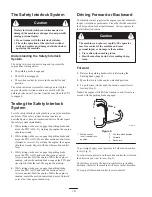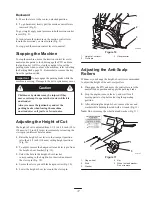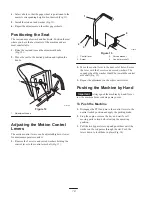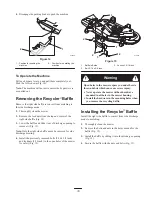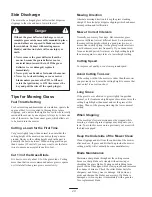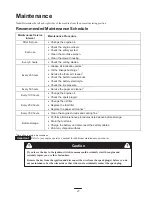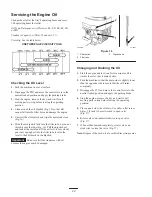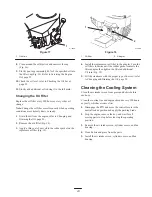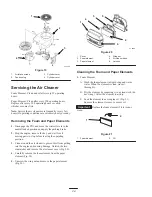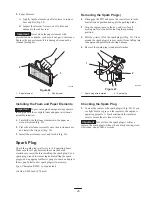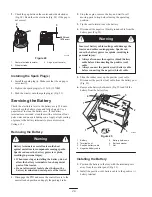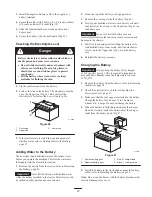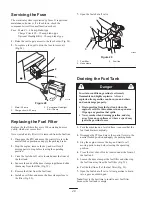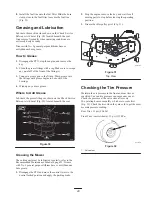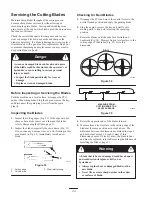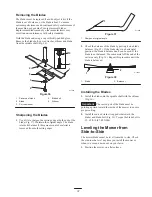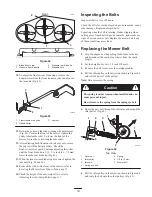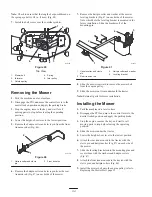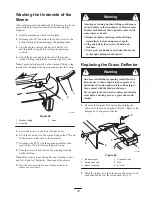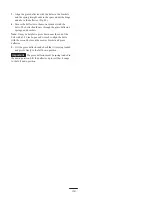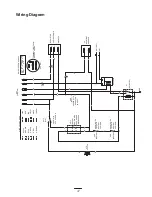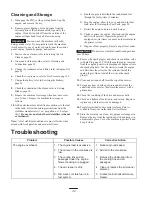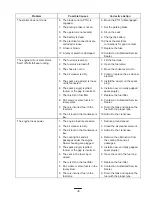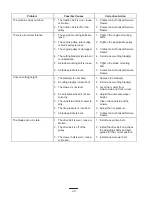
30
Servicing the Cutting Blades
Maintain sharp blades throughout the cutting season
because sharp blades cut cleanly without tearing or
shredding the grass blades. Tearing and shredding turns
grass brown at the edges, which slows growth and increases
the chance of disease.
Check the cutter blades daily for sharpness, and for any
wear or damage. File down any nicks and sharpen the
blades as necessary. If a blade is damaged or worn, replace
it immediately with a genuine Toro replacement blade. For
convenient sharpening and replacement, you may want to
keep extra blades on hand.
Danger
A worn or damaged blade can break, and a piece
of the blade could be thrown into the operator’s or
bystander’s area, resulting in serious personal
injury or death.
•
Inspect the blade periodically for wear or
damage.
•
Replace a worn or damaged blade.
Before Inspecting or Servicing the Blades
Park the machine on a level surface, disengage the PTO,
and set the parking brake. Stop the engine, remove the key,
and disconnect the spark plug wire(s) from the spark
plug(s).
Inspecting the Blades
1. Inspect the cutting edges (Fig. 33). If the edges are not
sharp or have nicks, remove and sharpen the blades;
refer to Sharpening the Blades, page 31.
2. Inspect the blades, especially the curved area (Fig. 33).
If you notice any damage, wear, or a slot forming in this
area (item 3 in Fig. 33), immediately install a new
blade.
1
2
3
m–151
Figure 33
1.
Cutting edge
2.
Curved area
3.
Wear/slot forming
Checking for Bent Blades
1. Disengage the PTO and move the control levers to the
neutral locked position and apply the parking brake.
2. Stop the engine, remove the key, and wait for all
moving parts to stop before leaving the operating
position.
3. Rotate the blades until the ends face forward and
backward (Fig. 34). Measure from a level surface to the
cutting edge of the blades (Fig. 35). Note this
dimension.
Front
m–1078
Figure 34
MEASURE FROM
CUTTING EDGE TO A
LEVEL SURFACE
m–2539
Figure 35
4. Rotate the opposite ends of the blades forward.
5. Measure from a level surface to the cutting edge of the
blades at the same position as in step 3 above. The
difference between the dimensions obtained in steps 3
and 4 must not exceed 1/8 inch (3 mm). If this
dimension exceeds 1/8 inch (3 mm), the blade is bent
and must be replaced; refer to Removing the Blades and
Installing the Blades, page 31.
A blade that is bent or damaged could break apart
and could seriously injure or kill you or
bystanders.
•
Always replace bent or damaged blade with a
new blade.
•
Never file or create sharp notches in the edges
or surfaces of blade.
Warning
Summary of Contents for 18-52ZX TimeCutter
Page 7: ...7 Slope Chart ...
Page 8: ...8 ...

